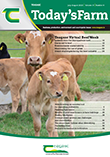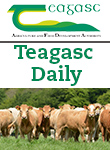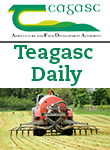
In 2019, the Hearne family was awarded the top prize in the NDC & Kerrygold Quality Milk Awards
- Date
- 30 June 2020
- Type
- Event Proceeding
Trevor Donnellan, Brian Moran, John Lennon and Emma Dillon, Agricultural Economics and Farm Surveys Department, Rural Economy Development Programme, Teagasc
- Date
- 29 June 2020
- Type
- Report


Virtual Beef Week replaces the planned major Teagasc Beef 2020 Open Day, which was due to take place at the Teagasc Animal and Grassland Research and Innovation centre, Grange, County Meath. Due to COVID-19 farmers will now have the opportunity to access the latest research and knowledge through their mobile phone, laptop or tablet.
- Date
- 29 June 2020
- Type
- Media Article

A European consortium co-ordinated by Professor Paul Cotter of Teagasc is using next-generation sequencing technologies to investigate the microbiomes of food systems and to improve our food quality, security and sustainability.
- Date
- 29 June 2020
- Type
- Media Article
The Signpost Series - ‘Pointing the way to a low emissions agriculture’
- Date
- 29 June 2020
- Type
- Event Proceeding

Good management of Slurry is needed to maximise grass growth, while at the same time minimise losses to our atmosphere and water bodies. ASSAP Advisor Ivan Kelly has some useful advice.
- Date
- 28 June 2020
- Type
- Media Article

To fully appreciate how valuable native woodlands are for our well-being and for biodiversity, take a slow walk through a mature oak and birch woodland during a full bloom of bluebells and just breathe in the fragrant air. Forestry Development Officer Jonathan Spazzi has more information on our native woodlands.
- Date
- 27 June 2020
- Type
- Media Article

Do you have a Ditch, a Gripe, a Sheough or a Marein on your farm? You must avoid contaminants such as nutrients and pesticides from entering these ditches to protect water quality in the receiving streams. Read more from researchers Karen Daly and Owen Fenton
- Date
- 26 June 2020
- Type
- Media Article
Clonakilty College Virtual Open Day took place on Wednesday, 17 June.
- Date
- 26 June 2020
- Type
- Event Proceeding
